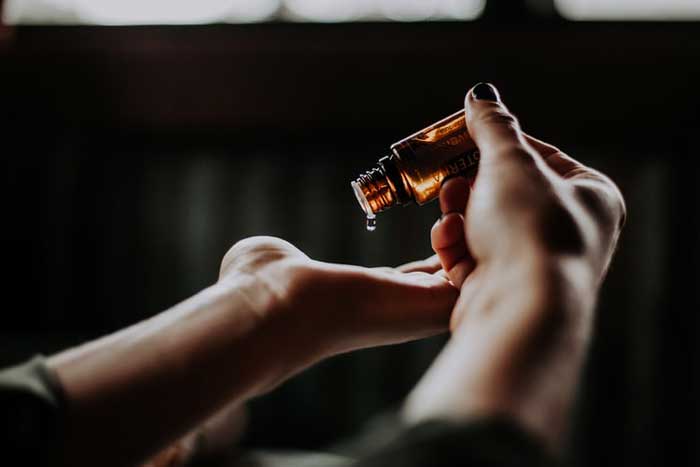Baby Products Guide: Things to Never Use
As manufacturers put out baby products, they try to present them as appealing as they can, simultaneously convincing you that you can’t get without them. Yet a lot of them are made with toxic ingredients which could be insidious
The industry doesn’t spare dollars to unfurl promises to help maintain the skin of the newborn just as on the first day – but if we get down to it, no remedies for that are really needful. The young skin doesn’t need anything to stay fresh. There is absolutely no necessity to treat it with special soaps, lotions and stuff. It will stay healthy all by itself.
The classic talc
This is a mineral that is ground into powder and mixed into many cosmetic baby powders. It is considered to be drying, but scientists discovered that it can cause lung irritation and act as carcinogenic. Talc can be found in rock formations where it is intermingled with magnesium silicate minerals, some of which, asbestos for one, can be very dangerous. While mining thorough separation of the talc can’t be done, so asbestos and other carcinogenic minerals are practically certain to find their way into talc-containing products.
When this became known some time in the 1990s, there were companies which immediately refused to use talc for their powders.
Sunscreen protection
Skin protection is quite a moot question, but the good idea is not to go for well-spread false notions surrounding the subject. For the baby the fewer chemicals, the better, so the safe way is to use only zinc-oxide based sunscreens that provide protection from ultraviolet radiation without marked chemical exposure and possible irritation.
During the first half-year of their life, babies should better get ultraviolet protection from wearing specially designed protective clothes and staying away from direct sunlight. With older babies, you can use topical sunscreen that should be applied about 20 minutes before they go out into the sun, and if they stay for longer than two hours, another application will be due.
Proplyene glycol
It is something that absorbs easily and serves to improve penetration – useful stuff, yet not wholly un-carcinogenic. What it does is opens pores wide providing better access for other chemicals. Its other jobs are wiping (as an ingredient in a special fluid) and de-icing airplanes, so actually it shouldn’t be in baby wipes, but it is. If labels say polyethylene glycol or polypropylene glycol, walk away to be on the safe side.
For wiping, why not prepare disposable wipes yourself at home and make liberal use of soap and warm water. This will save money, too.
Fragrance and bubbles
When it’s bath time, look out for giving the baby too much scrubbing. Again, mind what you use for scrubbing. Choose something not including synthetic fragrances, irritating sulfates and other potentially harmful chemicals. Purchase gentle cleaning cloths to avoid irritation.
Parabens is another ingredient to steer clear of, as well as chemicals concealed under the names of „coloring“ and „perfumes.“ Your baby’s skin can do without exposure to hydrators and oils. All the while, they can contract eczema if you are not careful about the ingredients. You will play safe if your bath products contain coconut butter or oatmeal.
Bubble bath sounds to be quite the thing for babies, but it is worth considering: newborn skin is exceptionally sensitive. Bubble baths can wash off natural hydrators leaving the skin dry, whcih might result in itchiness.
Baby oil
What is sold as baby oil is a substance prepared by mixing fragrance into cheap natural oil received as a result of processing petroleum. Nothing good can come of it. The oil forms a coat of covering on the skin thereby preventing the release of toxins. Avoid mineral oil in favor of natural oils – olive, almond, coconut – that you can rub into the young skin.
Multiple skin products
While looking like a perfect addition to your baby’s toilet shelf, most of these are common-type moisturizers, only scented to smell better. But the scents and perfumes they use are not at all agreeable for babies since they can bring about allergies and skin issues. Observe carefully whether your infant reacts to the cream you are using, whether it leaves traces of irritation. Infant products mustn’t be heavily scented.
Soothing lotions
If you noticed irritation or dry patches on the skin, you need a cream or an ointment that is guaranteed not to cause allergic reactions. One of such is lanolin which is usually safe for application on areas of skin blemished by allergy. Yet in some cases it may cause rash, so it bears watching, too.
Triclosan
If you go for antibacterial stuff, be aware that most of them have triclosan; it is an endocrine disruptor which is carcinogenic and altogether harmful. Certainly you want to shield your infant from bacterial siege, but there are good and bad ways to do that. An environment that is almost sterile doesn’t give the baby the chance to develop resistance to bacteria and work on immunity – which is fraught with allergies, Then, when there is a real need for antibacterial medicines, you may find they work much worse than you expected. So you would do well to shun antibacterial body washes and soaps unless the baby does need such kind of treatment.
Diaper creams
Creams to go with diapers, designed to treat a highly sensitive part of the body, ought to be really soothing and calming, free from unnecessary fragrances and additives. If you have ingredients like zinc oxide and petroleum, the diaper cream seems to be all right.
1,4-dioxane and ethylated surfactants
There is a study revealing that more than 50% of soaps and other baby products contain 1,4-dioxane – even if it isn’t included among the ingredients. The thing is, one of the ways to make chemicals not so harsh ist o add to them some ethylene oxide. Not only it is a carcinogen, but also the process results in the disengagement of 1,4-dioxane contaminant.
Once you see something with the letters eth on the label, chances are 1,4-dioxane is present, and this is not the stuff to use. Other ingredients to avoid are polyethylene, polyethylene glycol, oleth, sodium laureth sulfate, oxynol, -xynol, ceteareth and PEG.






